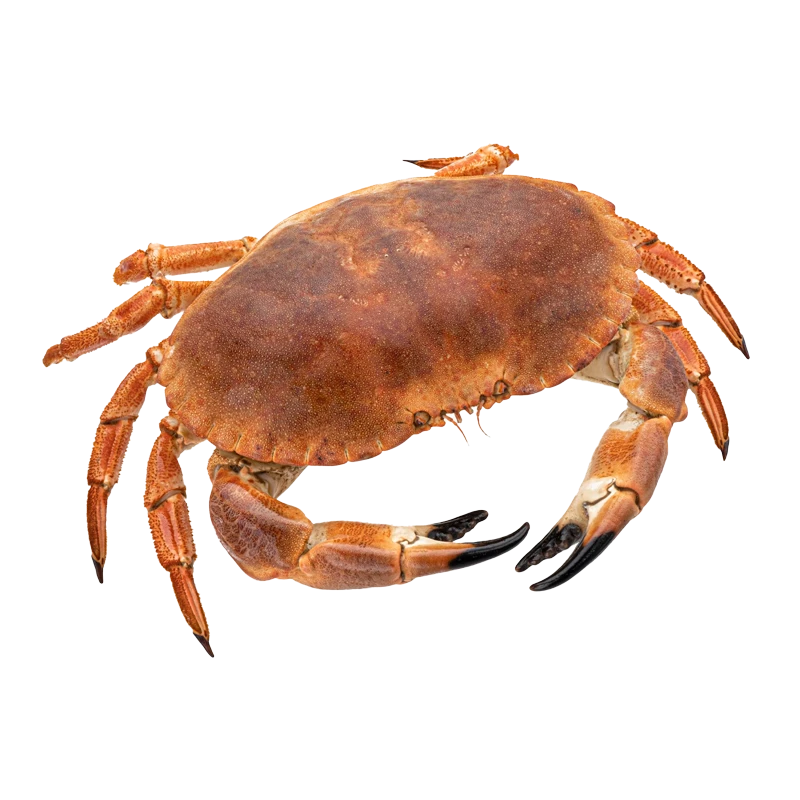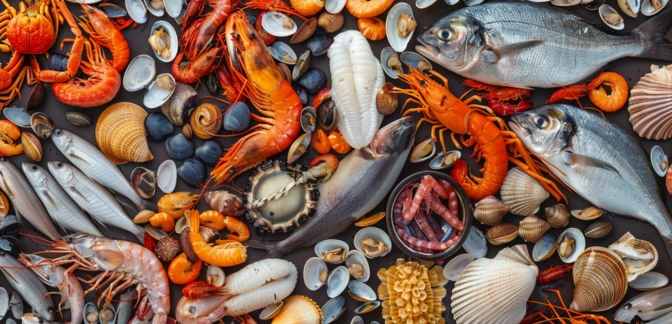Crabs — Nutrients, Health Benefits, And Shopping Tips

Written by Listonic Team
Last update on September 6, 2024
Nutrients
Nutrition facts
Amount per 100 g
Calories
🔥 83 kcal
| Nutrition per: 100 g | Value | % Daily Value* |
|---|---|---|
| Carbs | 0 g | - |
| Fiber | 0 g | - |
| Sugars | 0 g | - |
| Glycemic Index | 0 | - |
| Protein | 18 g | 36% |
| Sodium | 911 mg | 39.61% |
| Total Fat | 1 g | 1.28% |
*The % of Daily Value (DV) tells you how much a nutrient in a serving of food contributes to a daily diet. 2,000 calories a day is used for general nutrition advice.
18 g
🧀 Good Protein Content
Key takeaways
Health benefits
- High in protein, essential for muscle growth, repair, and overall body function.
- Rich in omega-3 fatty acids, which support heart health, reduce inflammation, and improve brain function.
- Contains essential vitamins and minerals such as Vitamin B12, zinc, selenium, and copper, which support energy metabolism, immune function, and overall health.
- Low in fat and calories, making them a nutritious and healthy seafood option.
- May support eye health due to the presence of nutrients like Vitamin A and omega-3 fatty acids.
Health risks
- Risk of contamination with harmful bacteria or toxins, particularly if the crabs are not properly stored, handled, or cooked to a safe internal temperature.
- High cholesterol content which can contribute to increased cholesterol levels if consumed frequently, particularly in individuals sensitive to dietary cholesterol.
- Potential for allergic reactions in individuals with shellfish allergies, causing symptoms like itching, swelling, or anaphylaxis.
- Risk of heavy metal exposure such as mercury, depending on the source of the crabs, which can pose long-term health risks with excessive consumption.
How to choose crabs
When choosing crabs, they should be alive and active if bought fresh. Their shells should be intact and not feel light, which can indicate a lack of meat inside. Observe the movement of the crabs; they should be lively, not lethargic.
Avoid crabs that have cracked shells or any foul odor. Fresh crabs should have a mild, briny scent, not an overpowering fishy smell.

How to store crabs
Live crabs should be stored in a cool, moist environment, such as the refrigerator, and used within 24 hours. Keep them in a ventilated container to allow them to breathe. For longer storage, freezing cooked crabs is recommended.
Storing live crabs in water can cause them to suffocate and spoil. It is important to keep them cool and moist, but not submerged. Ensure they are handled with care to avoid damage and maintain freshness.
✅ Extra Tip
How long do they last?
Crabs can last for 1-2 days in the refrigerator when stored in an airtight container. For longer storage, crabs can be frozen for up to 2-3 months. Proper packaging, such as vacuum-sealing, helps maintain their quality over longer storage periods.
What to do with leftovers?
Leftover crabs can be used in a variety of seafood dishes. Flake the meat and add it to salads with greens, avocado, and a citrus vinaigrette, or mix it into a pasta dish with a creamy sauce. Crab meat is also great in crab cakes, where it can be combined with breadcrumbs, eggs, and seasonings, then fried until golden.
Use crab meat in a seafood stew or chowder, where its sweet, delicate flavor enhances the dish. If you have a lot of crab meat, consider making a batch of crab dip with cream cheese, herbs, and lemon juice, perfect for serving with crackers or bread. Crab meat can also be used as a topping for pizzas or flatbreads, paired with ingredients like cream cheese, capers, and dill. For a quick and elegant appetizer, serve crab meat with a drizzle of lemon butter or toss it into a seafood risotto for a luxurious meal.
👨⚕️️ Medical disclaimer
Discover products from other categories
Listonic Team
Fact-checked
Our editorial team checked this article to make sure it was accurate at the time of publishing it.
Get the top-rated shopping list app on your phone!







